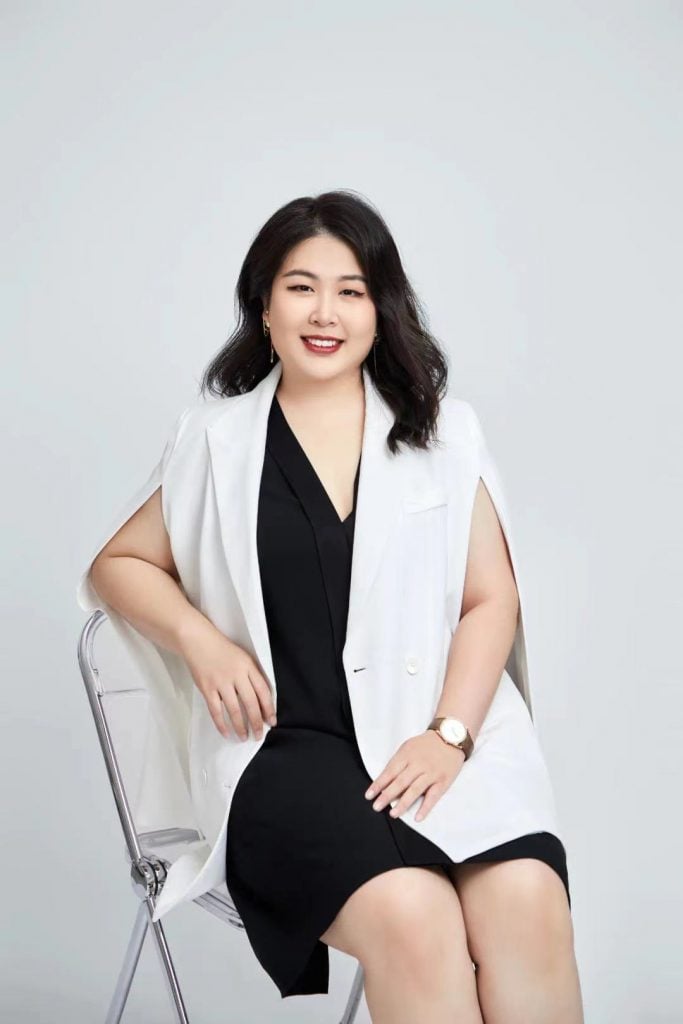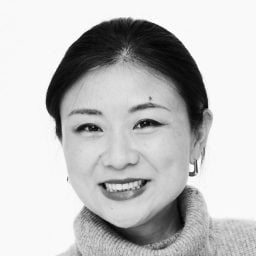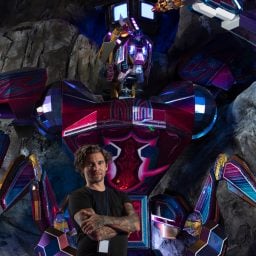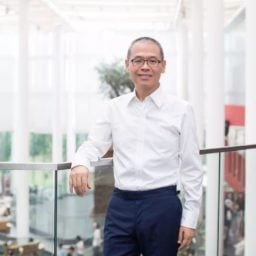For Justine Alexandria Tek and Yuz Museum, 2022 was a year of ups and downs. Her father, Budiardjo “Budi” Tek, the celebrated Indonesian-Chinese art collector who founded Shanghai’s Yuz Museum, died from pancreatic cancer in March. He was 65 and had been diagnosed with the disease six years ago. At the same time, Shanghai experienced a two-month citywide lockdown in the Spring, with several abrupt shutdowns, delays, and cancellations throughout the rest of the year. The art fairs ART021 and West Bund were also forced to close early due to the country’s zero-Covid policy.
The sense of unknown and upset that loomed over the Chinese art world in the past year provided the backdrop for my Zoom interview with Justine Alexandria in December. It was also four months after the official announcement of Justine Alexandria Tek’s appointment as museum director.
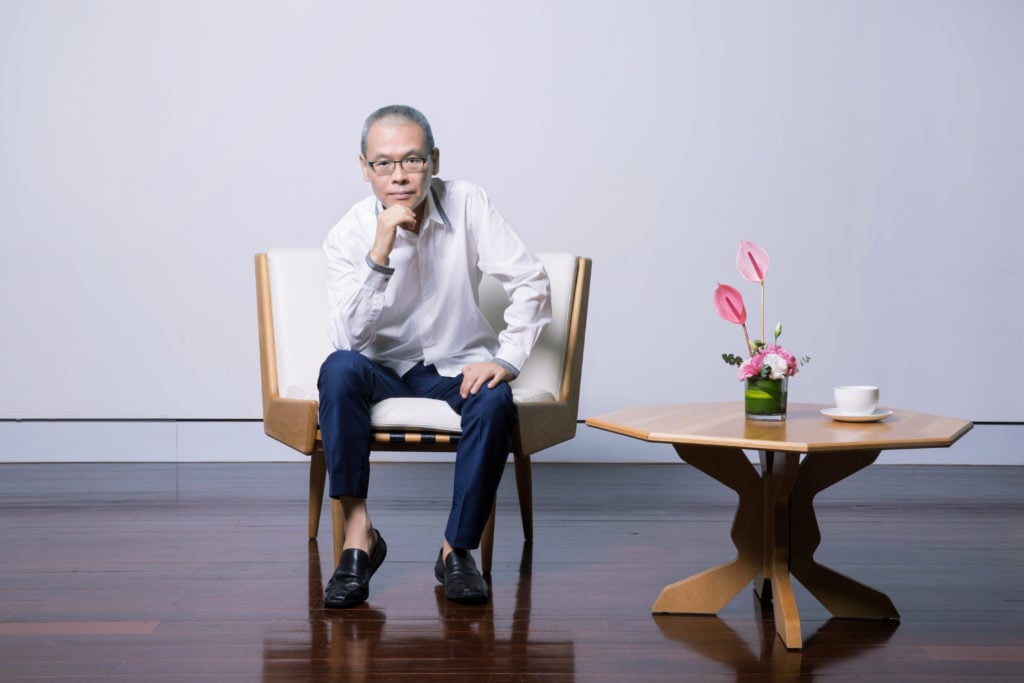
The collector Budi Tek. Photo courtesy of the Yuz Museum.
“White—if I were to describe the year in one color,” said Justine Alexandria. “2022 was a year of loss and gain for me. White symbolizes the purest of origins, like a light that can swallow up all darkness, just as Yuz will not stop moving forward. ”
The three-year-long pandemic posed unprecedented pressure and obstacles for the museum’s operations. “Luckily, we have a great backer,” Justine Alexandria spoke about her father sentimentally. “His enthusiasm, passion, and courage have changed me fundamentally. I see them as the biggest legacy he left behind.”
What art brought her father was not only passion, but also motivation to live. She told me that during Budi Tek’s cancer treatment, he was advised by doctors not to return to Shanghai for the opening of the Giacometti retrospective in March 2016. Tek refused to stay in bed as he felt he would regret it for the rest of his life if he missed the show. As Justine Alexandria recalls, Tek never let go of the museum. Even in his last days, he constantly muttered about the Yoshitomo Nara show, which opened in March 2022.
Justine Alexandria joined the Yuz Foundation in 2015 (just over a year after the museum opened to the public), becoming its director in 2017 and the museum’s CEO in 2018. Coming from a corporate background, she began with artist projects, and over the past seven years, has grown with the museum and the foundation, which together have executed and several blockbuster exhibitions and significant partnerships (such as the one with LACMA and the Qatar Museums).

Yuz Museum new pavilion design rendering. Photo: © HBAarchitecture
In 2022, despite the difficulties, the museum did not stop moving forward. In November, Yuz Museum announced the launch of the second phase of its strategic plan, titled Yuz Flow. As its first major project, a new site for the museum will open in Spring 2023.
In this exclusive Q&A with Artnet News, Justine is outspoken about her new responsibilities, the expansion of the museum, and the legacy that Budi Tek left behind.
Tell me about the past year for you and the museum. Art institutions and galleries experienced months-long lockdown in 2022. How did the museum cope with the closure, low attendance, and difficulties?
2022 was a very tough year for all, and a a devastating year for the Yuz. On March 5, Yuz Museum opened “Yoshitomo Nara” to public. On March 9, Yuz Museum went into a four-month lockdown. On March 18, Yuz lost our beloved founder, Budi Tek.
During the lockdown, we had to balance the safety of our employees and the safety of the artwork. Fortunately for the Yuz, we had amazing colleagues and security personnel who volunteered to stay behind, live in the museum 24/7, and continue to help us in monitoring the works inside the galleries; they were the heroes.
During the lockdown, it also prompted us to think and break through the barrier of what it means to be a museum, and what we could do to continue “museum visits” or “exhibition visits.” It gave us the opportunity to experience and explore engaging with our visitors through various ways.
The most difficult part of all is the effort and length we had to go to sustain the museum when we were robbed of crucial ticketing income that supports the museum.
Yuz Museum recently announced the launch of the second phase of its strategic plan, Yuz Flow. As its first major project, the new museum will reopen in Spring 2023, with a new model of “one main exhibition area + multiple triggers.” Can you tell us more about this strategic plan and the new venue?
As Yuz stepped into our ninth year, we wanted to truly incorporate one of our philosophies—that art can be integrated into our daily lives. To realize this ideology, we do not want to simply curate an exhibition or simply showcase artwork, but connect with visitors and stimulate their “curiosity” about art, and to further enhance their desire to know more. This led to the birth of the “Floating Art Museum” project—Yuz Flow—where we hope to use the “encounter” to trigger “enlightenment,” allowing the audience to explore and develop their own aesthetic concepts.
The model of “one main exhibition area + multiple triggers” is to bring the art and exhibition to you, instead of having the visitors come to the museum. Our new museum, which will open in May 2023, will practice this concept. While regular exhibitions are held in the main building of the museum, different art projects will be up within the vicinity, linking the whole community through art. We hope to trigger the interest of passers-by in wanting to know more about art.
Although art is said to have no boundaries, it actually has more limitations than we could have imagined. We hope to explore and work together with different institutions to connect art and culture as we continue entering a digital-driven era of globalization. One of our main focuses in for future plan is to implement the “trigger” internationally.
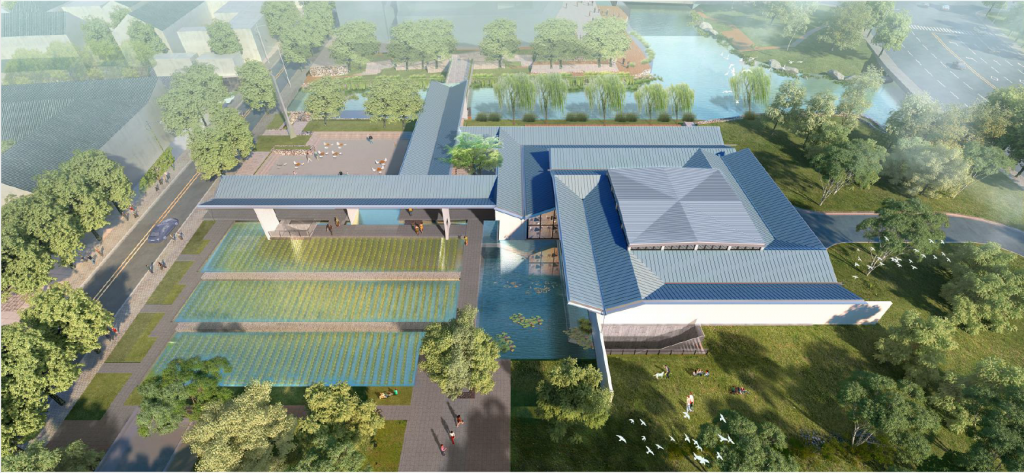
An overhead view of the new Yu Deyao Art Museum at Panglong Tiandi in Shanghai’s Hongqiao Business District.
Yuz Collection has a focus on Asian artists and their practices. Will this focus be continued in the following years? Is there any new direction for the collection and exhibition?
Yuz has been focused on collecting and advocating for Chinese contemporary art in the past decade. While we continue to do so, we hope to expand and diversify our collection. Yuz Collection will continue to collect under the directions of “Myth, History, and Future.”
As you mentioned, over the past few years, the museum team has done research in several major cities in China, and of course, the new museum project ended up in Shanghai. Is there a possibility that the Yuz Museum will be extended to other cities in China in the future? Or even to other cities in Asia?
The second phase of our strategic plan, Yuz Flow, is exactly how we would like to branch out and have different encounters with different cities. Instead of building and bringing in “Yuz Museum,” we hope to collide with local partners and create unique exhibitions and programs.

Yuz Museum new pavilion design rendering. Photo: © HBAarchitecture
I had the chance in 2019 to interview Budi Tek, Michael Govan, the director of LACMA and Sheikha Al Mayassa Bint Hamad Bin Khalifa Al-Thani of Qatar Museums. Any updates on this US-China-Arab partnership? What’s next?
The partnership was dormant during the past three years due to the pandemic, but we have not stopped cultivating our strong partnership and relationship. We are very happy and proud to announce that our partnership will continue and come back stronger than before.
Exchanging and sharing the uniqueness of each collection and exhibiting them in different institutions was the start of our partnership. We had the first LACMA collection show at Yuz back in 2019, Yuz had our first collection show at LACMA in 2021, and Qatar will have their first collection show coming soon at Yuz in 2023.
On top of what was planned, we will dive deeper into outlining education and public programs together, thinking of an innovative way to introduce and share the remarkable differences and knowledge on how art practices shape, and how those differences may be a breakthrough of something new. For example: Internally, we had in mind staff exchanges, exchanging of curatorial ideas, sharing techniques on art restorations, etc; externally, we had ideas on how to introduce artists and their works from each region, sharing how collectors think and collect, learning the history and culture, etc. We hope to exchange the experience and knowledge of art professionals.
One thing that I’m most excited about, though, in the early stage of discussion, is through this partnership, we could co-curate an exhibition together and design the public programs that come along with the exhibition—truly combine and explore the differences and similarities between the three countries.
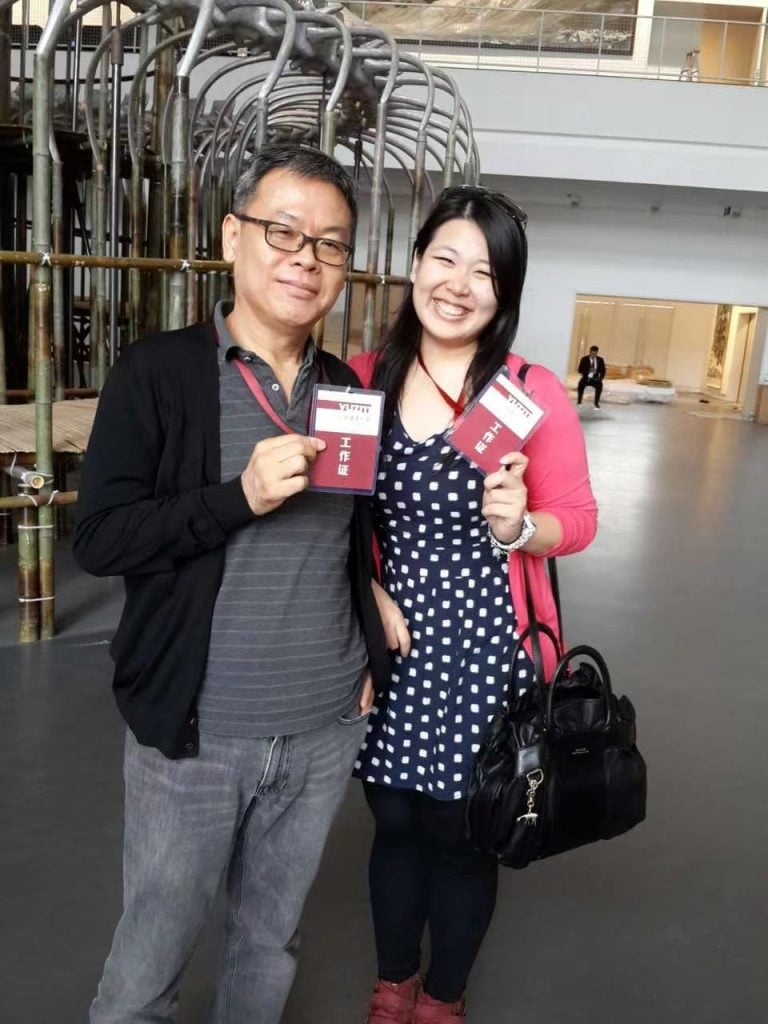
Justine Alexandria Tek with her father Budi Tek. Photo courtesy of Yuz Foundation.
When did you join Yuz Museum? What was your first role at the museum?
I joined the museum in November 2015, I remembered it was the last few weeks of “Rain Room” [a large-scale installation by Random International] and during the final preparation stage of the Giacometti retrospective at Yuz the following March. My first role in the museum was head of operations, where my main responsibilities were to help the museum set up a sustainable structure and support the museum in its everyday operations.
You are shouldering new responsibilities starting in 2022 and are now truly the person who leads the museum. How do you see these responsibilities? And how do you see the museum in the next decades?
It is a big responsibility and big shoes to fill, but I’m determined to make this responsibility my life mission too.
In the next decade, the Yuz Museum will concentrate on rooting within communities, being a part of its daily life, becoming a driving force in educating the next generation of art and culture, and being a witness to the current that will one day be an important historical record.
Whats the biggest legacy that your father left for you and the museum?
He left us all an amazing collection to share with the world, his ideology, his principles, his philosophies, and most importantly, his love and passion for life and art. He was a man who walked the talk, and I think that’s louder than anything else.
When he was diagnosed with pancreatic cancer, I saw how he struggled with his illness, how he fought with all he had, and how he was tormented. In the midst of all that despair, the only thing that supported him was his faith in Jesus and his love for art. He never failed to light up with the slightest talk of art. He flew back to Yuz for important openings despite his doctor’s warnings, he flew to art fairs despite vomiting and fevers in the night, and he went to visit artist’s studios and museums during his chemotherapy. His love and passion for art are what made him the Budi Tek.
That Budi Tek founded Yuz Foundation and Yuz Museum, that Budi Tek groomed the team at Yuz, and we are the witness and the testimony of the life he lived for art. The Yuz is what Yuz is and will be, and I am what I am now and will be because of the Budi Tek, and that is the greatest gift and legacy he left behind.
